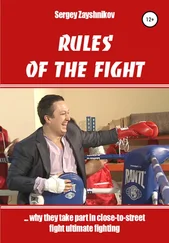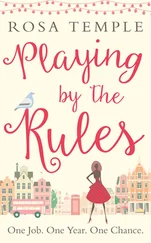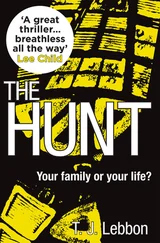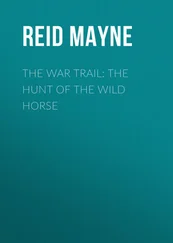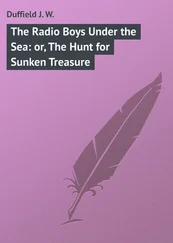Victor O'Reilly - Rules of The Hunt
Здесь есть возможность читать онлайн «Victor O'Reilly - Rules of The Hunt» весь текст электронной книги совершенно бесплатно (целиком полную версию без сокращений). В некоторых случаях можно слушать аудио, скачать через торрент в формате fb2 и присутствует краткое содержание. Жанр: Триллер, на английском языке. Описание произведения, (предисловие) а так же отзывы посетителей доступны на портале библиотеки ЛибКат.
- Название:Rules of The Hunt
- Автор:
- Жанр:
- Год:неизвестен
- ISBN:нет данных
- Рейтинг книги:4 / 5. Голосов: 1
-
Избранное:Добавить в избранное
- Отзывы:
-
Ваша оценка:
- 80
- 1
- 2
- 3
- 4
- 5
Rules of The Hunt: краткое содержание, описание и аннотация
Предлагаем к чтению аннотацию, описание, краткое содержание или предисловие (зависит от того, что написал сам автор книги «Rules of The Hunt»). Если вы не нашли необходимую информацию о книге — напишите в комментариях, мы постараемся отыскать её.
Rules of The Hunt — читать онлайн бесплатно полную книгу (весь текст) целиком
Ниже представлен текст книги, разбитый по страницам. Система сохранения места последней прочитанной страницы, позволяет с удобством читать онлайн бесплатно книгу «Rules of The Hunt», без необходимости каждый раз заново искать на чём Вы остановились. Поставьте закладку, и сможете в любой момент перейти на страницу, на которой закончили чтение.
Интервал:
Закладка:
He had no independent thoughts and no control. All he could focus on was this all-encompassing healing sexuality, a force made of physical sensation and waves of love.
Kathleen climaxed first, her body shuddering with release and a long cry of passion on her lips, and then she gripped him very tight and he came with enormous power and it seemed his orgasm would never stop. And then it was over.
They slept again in each other's arms, then Fitzduane got the fire going again and went and made tea and fresh orange juice and they talked in bed.
Unspoken was the thought that they were friends and not lovers and that now things were more complicated and that, perhaps, this was not the way it should be. All of this was true, but there was also the shared belief that what had happened was nothing but good.
Eventually and reluctantly, the talk moved to de Guevain. Fitzduane sat upright in the bed, staring into the fire as he talked, and Kathleen lay beside him, her arms around his waist, sometimes stroking him. He talked about how they had met, and fencing together, and his friend's family and the good times they had had together; and eventually, he spoke of the manner of Christian de Guevain's death. It was so horrible that Kathleen wanted to stop him, but he seemed to need to talk it through, to hear the words again so that he could accept them.
"Really, the reports and photographs said most of it," said Fitzduane grimly, "but they did not explain the significance of the method used. Ironically, Christian would have understood. We both studied edged weapons and the customs surrounding them. And one of the great debates was the efficacy of Western weapons contrasted with the Japanese. Japanese katana are considered by many to be the supreme examples of the swordmaker's art. They went to extraordinary lengths to achieve this.
"In medieval times in Japan, a sword had to be capable of cutting through the heavy metal and leather armor worn by warriors and still inflict a mortal wound with a single blow. This demanded blades with outstanding attributes, and since swords were handmade one at a time without the consistency of mass-production standards, the testing of swords was an important business. A sword that passed its tests was signed in gold by the examiner on the sword's nakago, or tang. Swords that failed were melted down to make spears – weapons for the lower orders.
"Thick rolls of straw were sometimes used for testing. Human-body testing was preferred and was common. Often, the samurai who tested swords was licensed by the shogun to execute condemned criminals. This supplied live bodies for testing, and the process was conducted as a formal ceremony. There were witnesses, special clothing was worn, particular strokes were made, and certificate of the results was issued. The sword used was equipped with a special testing handle made from two pieces of hard wood with adjustable holes secured by metal bands, which allowed maximum force to be exerted while carrying out the testing cuts.
"It was not unusual, after the initial cuts had dismembered the body, for the pieces to be stacked up again and again until there was no piece of flesh left much larger than a hand or foot.
"And that was how Christian de Guevain was found. And to rub home the callous horror of it, a certificate was left by the bastards: Yaibo – the Cutting Edge."
Fitzduane bent his head. He felt rage, disgust, nausea, sadness. Action and reaction; this bloody business called terrorism never ended.
But it could be contained. Individual groups could be destroyed. Another would doubtless spring up, but that would be tomorrow's battle.
He focused on what needed to be done now. Then he looked down at Kathleen. "And about us…"
Kathleen looked at him steadily. Her face was glowing, her eyes loving. "Don't talk about the future, Hugo," she said, with calm emphasis. And then she smiled and ran her lips across his loins before looking up at him. "This is about us and now. Make love to me."
13
Fitzduane's Island, Ireland
June 5
Yoshokawa and the Spider had departed the following morning, their mood somber after they heard the news of de Guevain.
After they had left, Chifune stayed, and for a further week took Fitzduane through the files she had brought with her and prepared him in detail.
Fitzduane was strained and drawn for the first couple of days, but then he snapped out of his depression and reverted to his normal equable nature.
The manner of Christian de Guevain's terrible death was far from forgotten, but publicly Fitzduane preferred to focus on the happier memories of his friend. That would be the way Christian would want it, he thought. Grief returned in waves despite his best efforts, but mostly he was successful in hiding it. He also planned, with quiet intensity, an appropriate retribution.
Their groundwork complete, Fitzduane and Chifune flew to Dublin in the Islander and then on to Heathrow, London, by Aer Lingus. At Heathrow they switched to the international terminal and boarded a Virgin flight for Tokyo. The flight, via Helsinki and St. Petersburg, was to take over twelve hours.
At 35,000 feet somewhere over Siberia, most of the passengers were asleep, Chifune among them, her breathing deep and regular. The flight attendant had brought blankets and Fitzduane had tucked one around his sleeping companion. He looked at her for a long moment. She was small, slight, elegant, and very beautiful, but in a markedly un-Western way. Compared to Etan's leggy attractiveness or Kathleen's voluptuousness, Chifune was almost insubstantial. Yet, viewed without preconceptions, she was quite lovely.
He reclined in his seat and closed his eyes. His chest wound had healed completely, and his leg was not virtually fully recovered. The endless exercises and training had paid off. He was now actually fitter than he had been in some years. God knows, he was going to need every edge. Third-party protection could be relied upon just so far. He would have felt much happier if carrying a firearm. On this point, the Spider had been obdurate.
The Japanese had a history of antipathy toward firearms. During their closed period, the Shogun had structured society in a strictly hierarchical fashion and guns had been seen as its antithesis.
Anyone could use a gun regardless of rank.
This would not do. Accordingly, although guns had been used widely in Japan in the fifteenth century, from the sixteenth century on they had been virtually banned. The peasants were forbidden to be armed. Only the various ranks of samurai were permitted to be armed, and even then only with swords, bows, and spears. So who said you could never turn back technological developments? The Japanese rejection of the gun had worked for nearly three hundred years.
Fitzduane had been well-briefed on the Hodama-Namaka-Yaibo triangle. He had been given an extensive dossier on the whole business, including a detailed summary of the police investigation to date. The file included photos of the principals, and he had been shown covert police videos. He felt he was beginning to know the opposition. He was even beginning to develop some theories as to what was going on.
Fitzduane's mind wandered onto the concept of ‘degrees of separation,’ the thesis that everybody, even in a world of five billion people, was only a handful of contacts away from everyone else. You always knew someone who knew someone who knew someone.
For instance, a perusal of the file revealed a shared interest with Kei Namaka in medieval weaponry. Namaka had even written several articles on Japanese arms for the Medieval Warrior's Society. Fitzduane was also a member.
In addition, Yoshokawa and the Namakas, as first-rank businessmen, were connected through the keidanren, the powerful Japanese employers' association. The keidanren was a major provider of finance for the LPD, the party whose strings Hodama had helped to pull before coming to a rather unpleasant end.
Читать дальшеИнтервал:
Закладка:
Похожие книги на «Rules of The Hunt»
Представляем Вашему вниманию похожие книги на «Rules of The Hunt» списком для выбора. Мы отобрали схожую по названию и смыслу литературу в надежде предоставить читателям больше вариантов отыскать новые, интересные, ещё непрочитанные произведения.
Обсуждение, отзывы о книге «Rules of The Hunt» и просто собственные мнения читателей. Оставьте ваши комментарии, напишите, что Вы думаете о произведении, его смысле или главных героях. Укажите что конкретно понравилось, а что нет, и почему Вы так считаете.
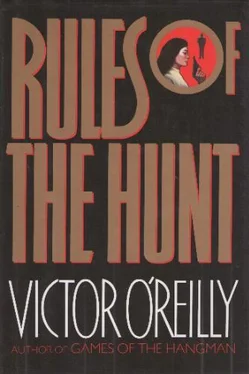



![Беар Гриллс - The Hunt [=The Devil's Sanctuary]](/books/428447/bear-grills-the-hunt-the-devil-s-sanctuary-thumb.webp)
